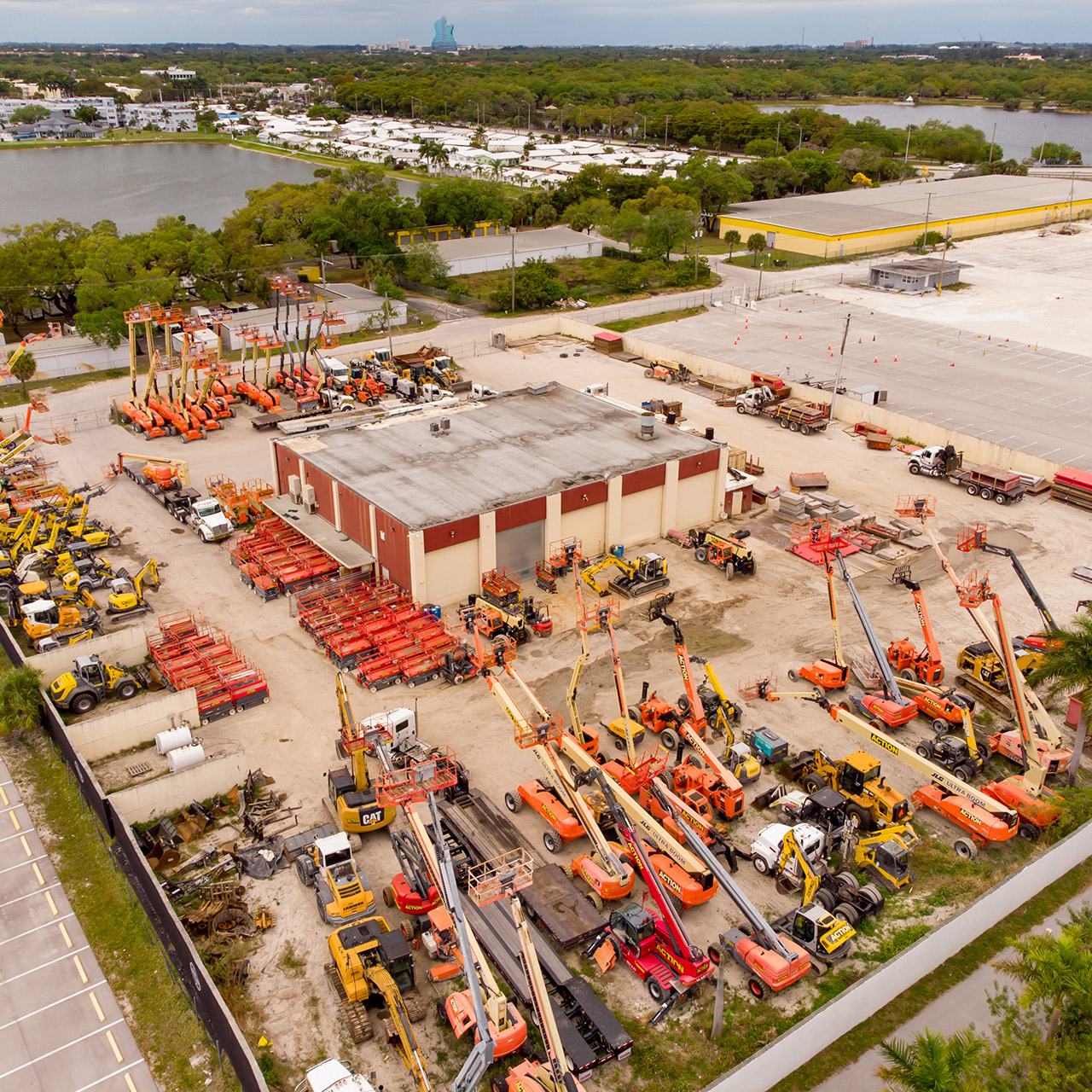Embrace the evolution and use equipment manufacturing software to your advantage
Technology for equipment manufacturing promises higher productivity, enhanced customer experiences, and lower costs. To achieve these transformative benefits, midsize manufacturers are turning to Sikich to deploy solutions that enable you to:
- Build a resilient supply chain
- Create more value from customer relationships
- Enhance customer experience and empower technicians
- Unify data across sources to unlock customer and equipment insights
- Innovate quickly to drive business transformation
- Enable new business models
Sikich came highly recommended, and we were intrigued by their ERP recovery services, which turn around struggling projects to be successful. We needed a consulting partner who understood the configure-to-order and engineer-to-order business, and saw quickly that Sikich was very familiar with our operating model. We didn’t have to spend time educating the Sikich team about how our business was run. They understood it from the outset.
Alex Ingram, IT Director
Hamilton Company
CONTROL COSTS ONCE AND FOR ALL, AND MAKE YOUR BEST DECISIONS
You deserve tools and people who know your business. That’s why Sikich crafted HEADSTART for Equipment Manufacturing, built on Dynamics 365 technology. It supports your core processes of designing, configuring, manufacturing, selling, delivering, and servicing. Rather than starting from a blank slate, we offer a preconfigured industry solution, based on best practices to help you overcome industry challenges.

Optimize for Shop Floor Efficiency
The shop floor at the heart of equipment manufacturing presents many opportunities for driving greater efficiency and productivity. At Sikich, we’ve worked with many clients to help them make meaningful, nondisruptive changes that start at the shop floor but which can benefit executives and teams across the entire business. Imagine a scenario where at any given moment, you’re able to see in real time where any giving manufacturing production or work order is. That visibility can help you in a number of ways, starting with inventory management, but it can also help you with that customer service aspect. For example, a customer may need to know up-to-date, minute-by-minute, step-by-step information about their order.
With Dynamics 365 Finance and Supply Chain Management and some of the supporting activity, you can provide that level of visibility to your customers and really drive customer satisfaction.
Master Your MRP
Microsoft Dynamics 365 has a few different features and functions out-of-the-box for maintenance and master resource planning (MRP). The first is an integrated and sophisticated enterprise asset maintenance tool. This is a solution that helps you schedule your preventative maintenance, your scheduled maintenance, as well as account for unscheduled maintenance. Some of these different features and functions allow you to reduce the risk of machinery breakdown as well as create your manufacturing schedules, thereby accommodating the necessary maintenance work and down times.
Then on top of that, Dynamics 365 has what traditional ERPs have called MRP, but this includes a really fantastic feature with in-memory MRP. Meaning, they’ve actually reduced and removed the processing power from the backend of the ERP, which creates a much quicker MRP run. This allows you to run MRP plans much more frequently and have the adaptability to change what those customer demands.


Increase Warehousing and Transportation Visibility
The same level of automation is available through the warehousing and transportation solutions within Dynamics 365. This offers an integrated warehouse management system, as well as a transportation management system that helps provide visibility of product movement, completing production processes, and tracking things all the way to the customer’s doorstep. You really have an idea of where the goods are, when will they be delivered, and can promise that with a high degree of attainability when talking with your customers.
Understand Demand
Now that we know how to understand the demand from a manufacturing perspective, how do we understand the demand that’s coming from customers and sales generated activities? Businesses often react to trends, and don’t spend a lot of time understanding and predicting. It really comes down to the simple fact that you need to understand how your customers are buying today. The simplest and easiest way to do that is through your sales pipeline and in your seller’s performance. Ask your organization, how are sales performing against their quotas?
Many organizations cobble together their pipeline in Excel spreadsheets. They’ve got a static version of information that they share and circulate, and it’s not real time. That’s a struggle for a lot of sellers, because they’re really trying to understand where are they against their quota. With Microsoft Dynamics 365, you have real-time access into your sales pipeline and seller performance. Your sellers will have information they need to keep up with clients appropriately, and your executive team will also have the information they need to help track against organizational goals and course correct along the way.


Forecasting Intelligently
With forecasting, we’re not just talking about sales pipelines. We’re talking about trends and understanding how deals are moving from the beginning of the quarter to the end of the quarter, what happens in between. With Microsoft Dynamics 365 you can see how are deals slipping, what’s the impact of that movement, not only the impact on the pipeline, but also with demand planning for materials? Looking at that information, understanding how deals move, and understanding how your sales organization moves those deals to the pipeline is critical.
It allows you to understand how things happen early in the quarter could negatively impact your forecast at the end of the quarter. With Dynamics 365, you can turn the sales pipeline into a true forecast that gives your organization the ability to positively impact your pipeline in demand by understanding how deals move through the business.
Expand Equipment Revenue Through Rentals
As you are constantly seeking innovative ways to boost revenue and strengthen customer relationships, one strategy gaining momentum is Equipment-as-a-Service (EaaS). EaaS integrates equipment rentals alongside traditional sales in manufacturing. This approach not only helps navigate revenue fluctuations but also fosters enduring connections with customers. By adopting a holistic approach that combines rentals, service offerings, and EaaS, you can maximize revenue while also improving customer relationships.


Maximize your Skilled Labor
With an ongoing talent shortage, one of the key advantages Microsoft Dynamics 365 is its ability to automate repetitive tasks and streamline processes. By automating manual processes, the system reduces the reliance on skilled labor and trades, mitigating the impact of talent shortages. This automation also frees up resources for more complex tasks, increasing worker productivity and enabling the organization to achieve more with less.
HEADSTART SM
FOR EQUIPMENT MANUFACTURERS
To streamline Microsoft Dynamics 365 for Finance and Supply Chain and Dynamics 365 CRM deployments, Sikich has developed the HEADSTART approach. HEADSTART maximizes your investment, reduces project duration and cost, and lets you focus on operational excellence through enhanced visibility and insights, streamlined process flow, and enhanced decision support.
Get a working prototype in 6 weeks
Get up and running with your system quickly using YOUR sample data.
33% Reduction in Project Duration
Experience drastic results in your projects, by completing them more efficiently.
25% Reduction in Total project Cost
Realize some substantial cost of ownership savings.
Our entire decision of working with Sikich was the people behind the name brand. They looked at our business processes and made recommendations that were spot-on.

Ben Hagler, VP
Hagler Systems
Case Studies from Clients
Mid-Continent Instruments
Microsoft stopped supporting Microsoft Dynamics AX 2012 in April, 2022. However, many companies still use this ERP system on-premises and need to move to another solution. The Sikich ERP team helps them gain the benefits of Microsoft Dynamics 365 and the modern cloud by performing efficient, no-risk, nondisruptive transitions.
Planar
After the migration from on-premises ERP to Microsoft Dynamics 365 Finance and Supply Chain in the cloud, Planar manages its operations in the U.S., Asia, and Europe on a single, scalable technology platform. For technology users, the new ERP serves as the sole resource to manage their work and find information.
Simon Roofing
Simon Roofing collaborated with Sikich to replace legacy CRM with a modern cloud solution, Microsoft Dynamics 365. Dynamics 365 allows the company to manage its operations with unprecedented transparency, enhance how it serves customers, and drive improvements throughout its processes.
The Pulse of Digital Transformation in Manufacturing
A survey among 150 manufacturing executives reveals optimism and insights into an industry ready to move forward with enterprise-level digital transformation and AI projects. Download this report to learn:
- The top 3 technologies respondents are investing in
- Participants’ main reason for considering an ERP investment
- Top benefit organizations hope to achieve with tech investments
- The main area of AI interest in manufacturing
This report was created in partnership with Manufacturing Dive.




